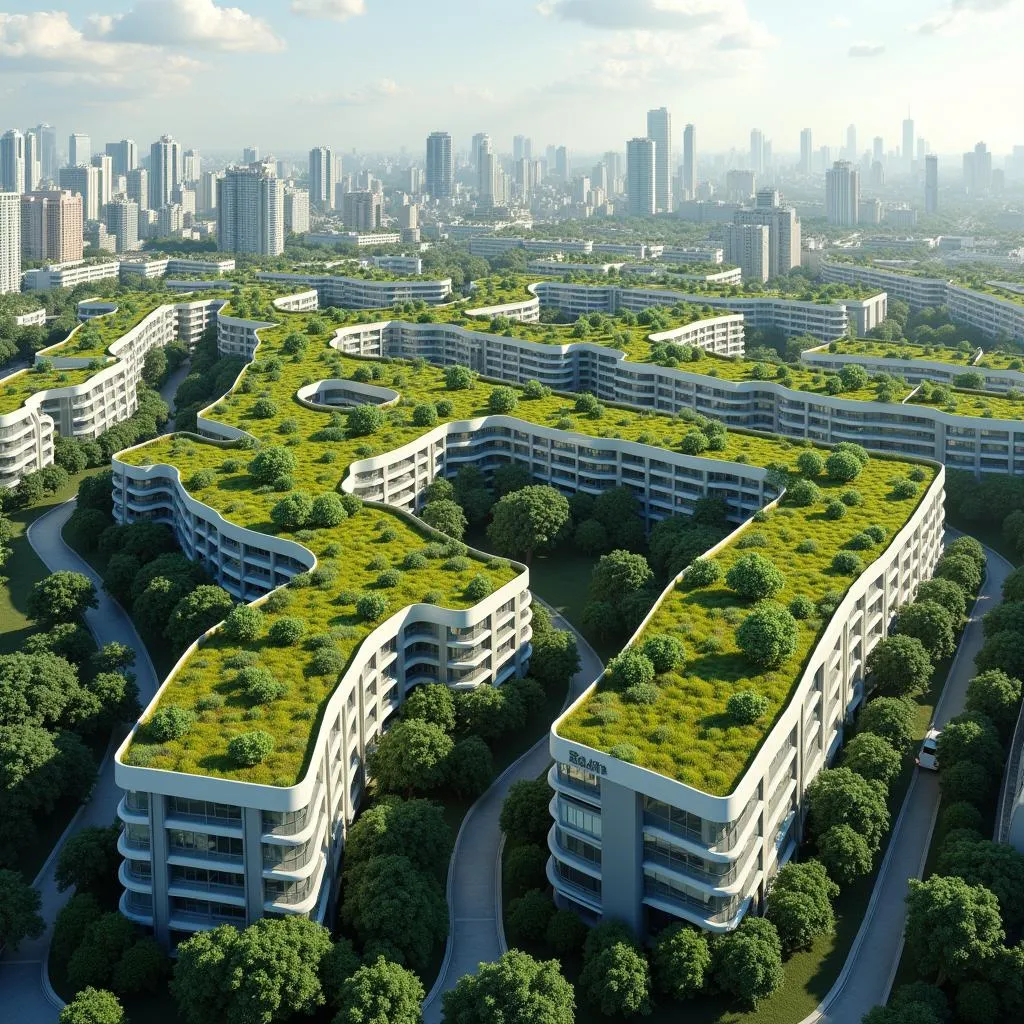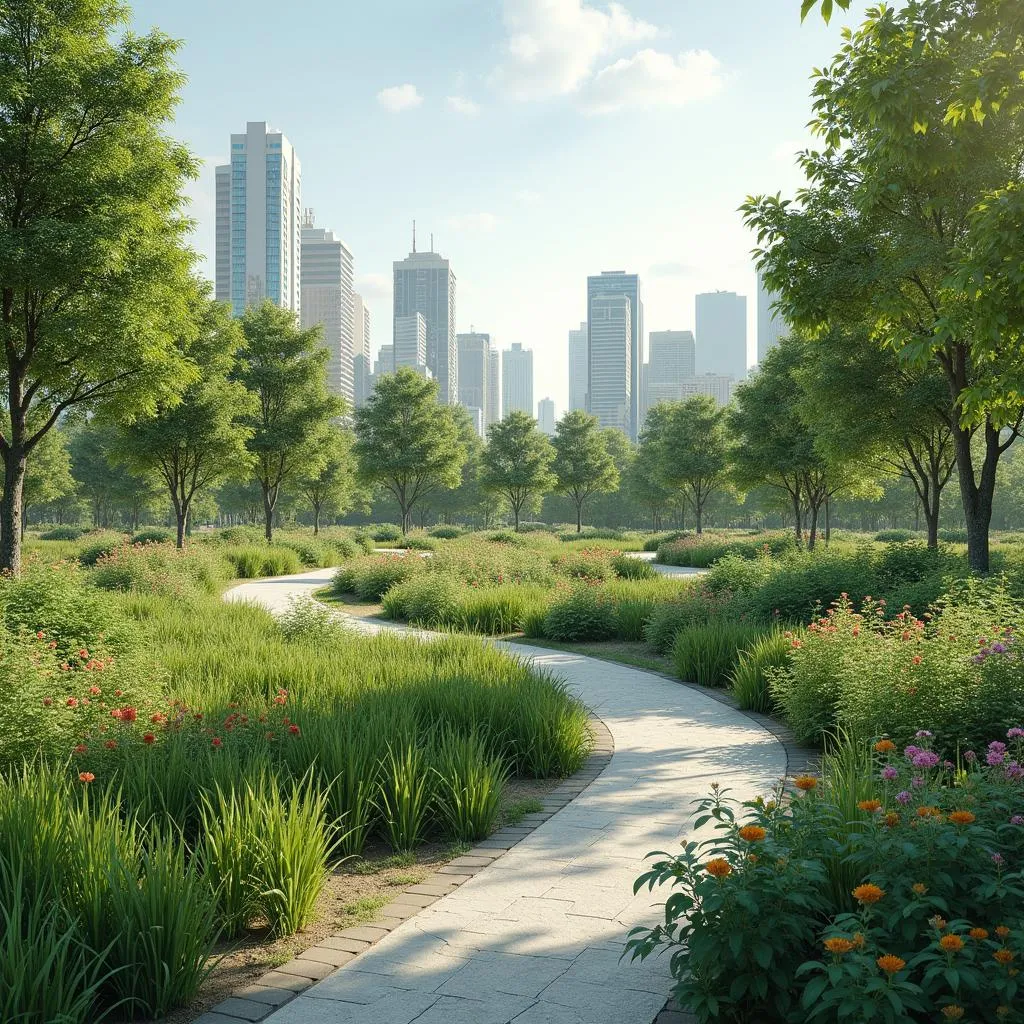Urban Planning And Green Infrastructure are key topics in the Summarize Written Text section of the PTE exam, particularly for those who are preparing to understand the role of sustainable development. These topics often combine environmental concerns with innovative city planning strategies. Below, we present a comprehensive example question on this topic followed by sample responses for practice.
PTE Summarize Written Text Question on Urban Planning and Green Infrastructure
Question Prompt
Urban planning plays a significant role in shaping the environment of cities. Modern urban planners are increasingly focused on the integration of green infrastructure into urban areas. This embraces everything from green roofs and walls to eco-friendly public parks and trails. Green infrastructure not only improves the aesthetic aspect of cities, but also contributes to environmental sustainability by filtering pollutants, reducing the heat island effect, and promoting biodiversity. Implementing green infrastructure within urban developments can also help mitigate the effects of climate change, providing resilience against flooding and extreme weather conditions. Despite these benefits, there are challenges, including the high cost of implementation and maintenance, as well as resistance from stakeholders who prioritize economic growth over environmental concerns. However, many believe that such initiatives are crucial for the future of our cities.
Summarize the text in one sentence.
Sample Responses and Analysis
Band 90 Response
Modern urban planning focuses on integrating green infrastructure into cities to support environmental sustainability and resilience against climate change, although it faces challenges such as high costs and resistance from stakeholders who prioritize economic growth.
Content: This summary captures all critical points, including the role of green infrastructure in city planning, environmental benefits, challenges of implementation, and economic considerations.
Form: The response is well within the word limit (28 words) and maintains a single sentence, as required.
Grammar: The structure is complex and correct, using subordinate clauses effectively.
Vocabulary: The use of accurate terminology like “green infrastructure,” “resilience,” and “economic growth” adds sophistication.
Spelling: No errors.
Band 80 Response
Green infrastructure in urban planning improves environmental sustainability and helps manage climate risks, but its high costs and resistance from economic stakeholders are significant challenges.
Content: This response covers the essential points but omits details like “heat island effect” and “aesthetic aspects.” Overall, it is close to the full content.
Form: The form is correct, with a 24-word response which fits the requirements for a Summarize Written Text task.
Grammar: The sentence is grammatically correct but less complex compared to the Band 90 response.
Vocabulary: Although effective, this response does not use as varied vocabulary, missing terms like “integration” and “resilience.”
Spelling: No errors.
Band 70 Response
Green infrastructure helps cities reduce pollution and mitigate climate change, but it is expensive and faces resistance from stakeholders.
Content: The key ideas are present, but significant details like the benefits to biodiversity and heat island reduction are absent.
Form: The response is 19 words, which is slightly brief but still acceptable.
Grammar: The structure is simple but correct.
Vocabulary: The vocabulary is too general—more specific terms like “environmental sustainability” or “urban planning” would improve clarity.
Spelling: No errors.
Band 60 Response
Green infrastructure is important for cities, even though it’s expensive and people are resistant to it.
Content: This lacks several critical points, such as how green infrastructure improves the environment and contributes to sustainability.
Form: The response is only 17 words, bordering on insufficient content.
Grammar: The structure is correct but overly basic with no complex sentences.
Vocabulary: Vocabulary is overly simplistic; words like “benefit” or “important” are vague in this context.
Spelling: No errors.
Vocabulary and Grammar Practice
Here are 10 challenging words from the sample question, along with definitions and usage examples:
-
Mitigate /ˈmɪtɪɡeɪt/ – v. to make less severe or serious.
- Example: Green infrastructure can mitigate the effects of flooding in urban areas.
-
Resilience /rɪˈzɪlɪəns/ – n. the ability to recover quickly from difficulties.
- Example: Increased resilience against climate change is one of the goals of urban planning.
-
Stakeholder /ˈsteɪkˌhoʊldər/ – n. a person with an interest or concern in something, especially a business.
- Example: Stakeholders often have different priorities when it comes to urban development.
-
Sustainability /səˌsteɪnəˈbɪləti/ – n. the ability to maintain or support an activity over the long term.
- Example: Cities need to adopt green infrastructure to ensure environmental sustainability.
-
Biodiversity /ˌbaɪ.oʊdəˈvər.sɪ.ti/ – n. the variety of life in the world or in a particular habitat.
- Example: Parks and gardens can increase biodiversity in urban environments.
-
Economic Growth /ˌiː.kəˈnɒm.ɪk/ /ɡrəʊθ/ – n. the increase in the amount of goods and services produced by an economy over time.
- Example: Economic growth does not always align with environmental goals in urban planning.
 Green roof in urban city with eco-friendly design, mitigating carbon emissions
Green roof in urban city with eco-friendly design, mitigating carbon emissions
-
Pollutant /pəˈluːtənt/ – n. a substance that pollutes something.
- Example: Trees and plants help filter air pollutants in cities.
-
Urbanization /ˌɜːrbənɪˈzeɪʃn/ – n. the process in which towns and cities grow steadily.
- Example: Rapid urbanization requires careful planning to maintain green spaces.
 Eco-friendly urban park promoting sustainability and biodiversity
Eco-friendly urban park promoting sustainability and biodiversity
-
Aesthetic /esˈθet.ɪk/ – adj. concerned with beauty or the appreciation of beauty.
- Example: Green roofs can add an aesthetic value to buildings.
-
Ecological /ˌiːkəˈlɒʤɪkəl/ – adj. relating to or concerned with the environment.
- Example: Ecological designs are becoming more popular in urban planning projects.
Conclusion
The Summarize Written Text task is an integral part of the PTE exam that tests your ability to concisely capture the essence of a passage. In this practice, we explored the importance of urban planning and green infrastructure, a common and significant topic in both modern society and the PTE exam. As you practice, focus on including all major points from the passage, while keeping your response within the word limit and ensuring it follows proper grammar and structure.
By practicing more on specific topics like Urban resilience to natural disasters and Urban sprawl and environmental sustainability, you can strengthen your summarization skills and better prepare for the exam.